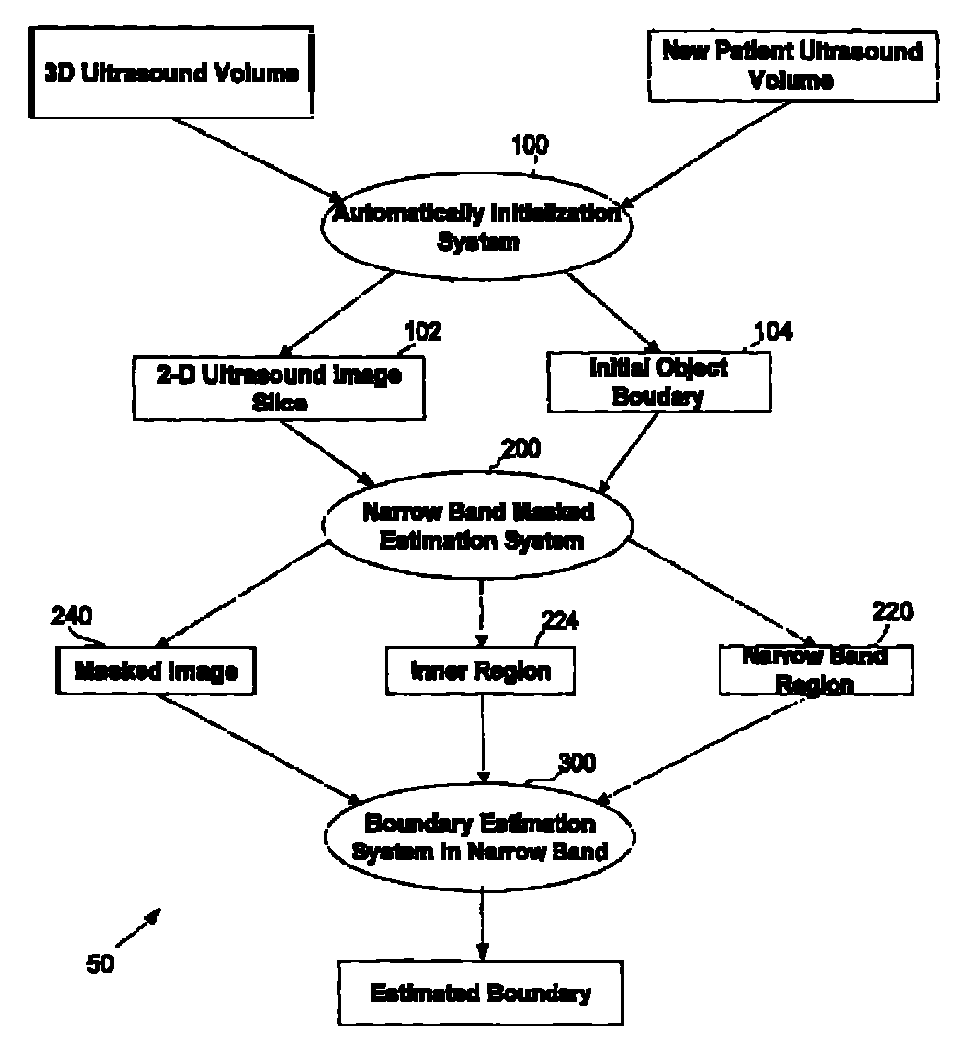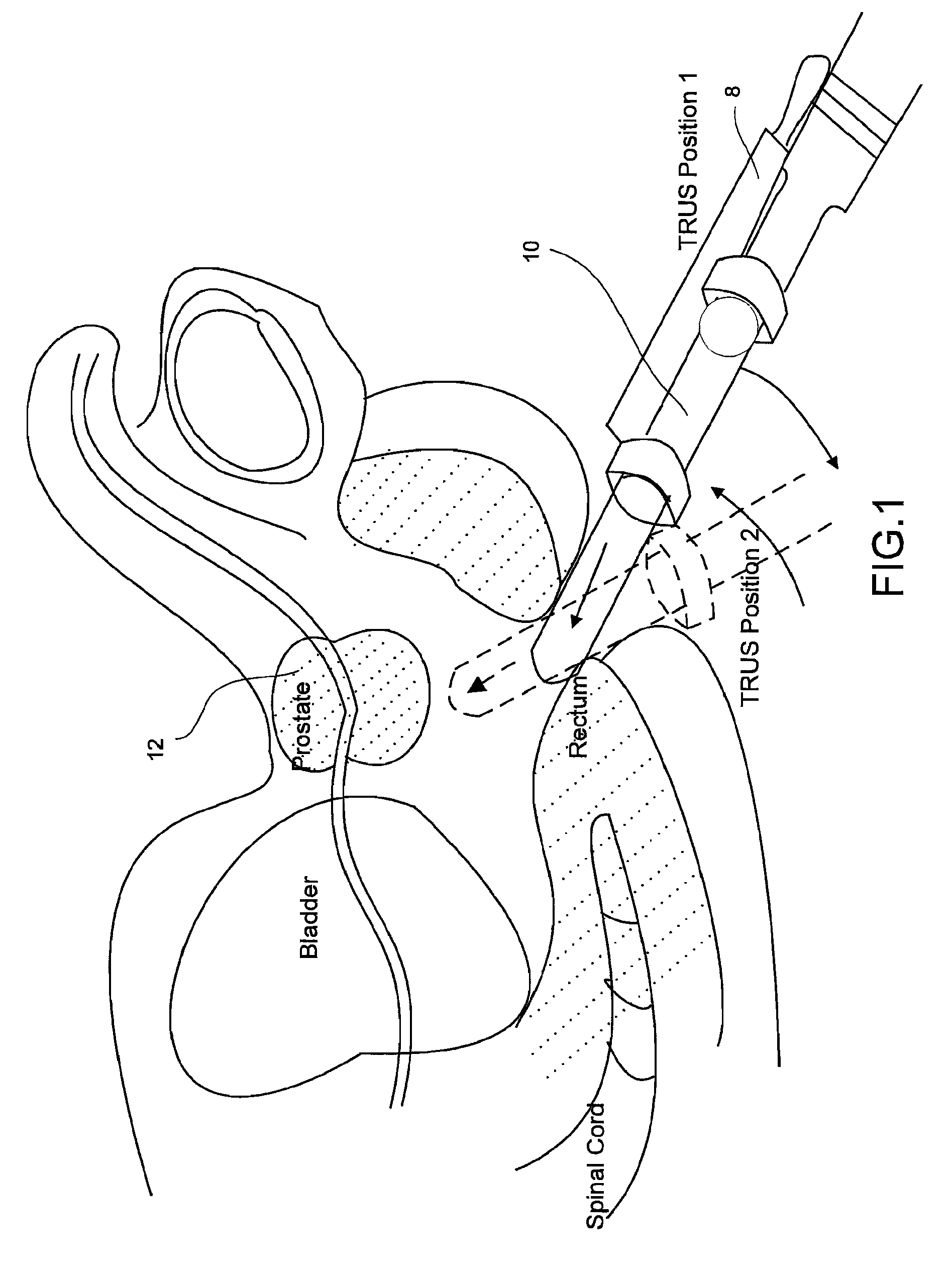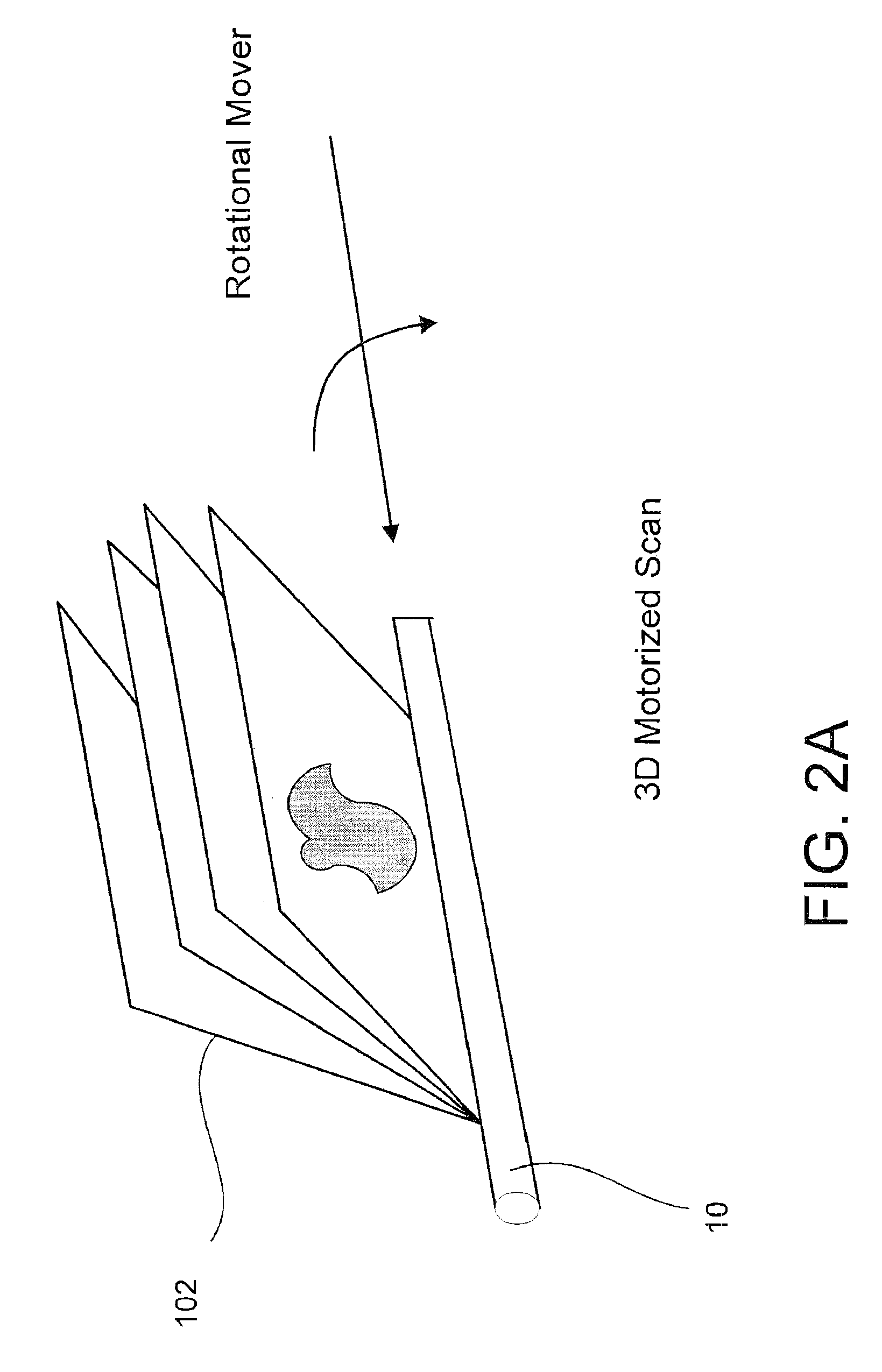Object recognition system for medical imaging
a technology of object recognition and medical imaging, applied in the field of medical imaging, can solve the problems of inability to generate segmented images of the prostate, inability to realize real-time imaging, and inability to segment the prostate, etc., to achieve stable and easy operation, minimize the energy function of the initial contour/boundary, and minimize the effect of the energy function
- Summary
- Abstract
- Description
- Claims
- Application Information
AI Technical Summary
Benefits of technology
Problems solved by technology
Method used
Image
Examples
Embodiment Construction
[0040]Reference will now be made to the accompanying drawings, which assist in illustrating the various pertinent features of the present disclosure. Although the present disclosure is described primarily in conjunction with transrectal ultrasound imaging for prostate imaging, it should be expressly understood that aspects of the present invention may be applicable to other medical imaging applications. In this regard, the following description is presented for purposes of illustration and description.
[0041]Disclosed herein are systems and methods that allow for obtaining ultrasound images and identifying structure of interest from those images. In this regard, a segmentation algorithm is utilized to analyze the images such that structures of interest may be delineated from background within the image. Specifically, in the application disclosed herein, a segmentation algorithm is provided that is utilized to delineate a prostrate gland such that volume and / or shape of the prostrate ...
PUM
 Login to View More
Login to View More Abstract
Description
Claims
Application Information
 Login to View More
Login to View More - R&D
- Intellectual Property
- Life Sciences
- Materials
- Tech Scout
- Unparalleled Data Quality
- Higher Quality Content
- 60% Fewer Hallucinations
Browse by: Latest US Patents, China's latest patents, Technical Efficacy Thesaurus, Application Domain, Technology Topic, Popular Technical Reports.
© 2025 PatSnap. All rights reserved.Legal|Privacy policy|Modern Slavery Act Transparency Statement|Sitemap|About US| Contact US: help@patsnap.com



